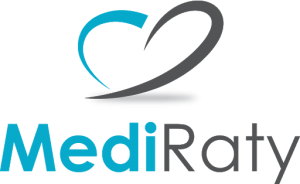Retinal laser therapy
PricelistGENERAL INFORMATION
Retinal laser therapy, or laser photocoagulation, is considered one of the most effective therapeutic methods for treating eye diseases. It is a procedure performed to treat various retinal disorders:
- diabetic changes of the retina (diabetic retinopathy),
- central retinal vein occlusion, central retinal artery occlusion,
- prophylaxis of changes in the peripheral parts of the retina (e.g., lattice degeneration),
- prophylaxis of retinal tears/holes (prophylaxis of retinal detachment).
During retinal laser therapy
- Strong connections are formed between the retina and the wall of the eye. These connections, called scars, secure the openings and tears so that fluid from inside the eye does not detach the retina.
- All lesions, including microaneurysms and ischemic areas of the retina, are destroyed.
- The abnormal blood vessels are closed.
- In cases of circulatory disorders, laser photocoagulation partially destroys the retina so that it needs less oxygen.
The use of laser technology minimizes the risk of serious complications, leading to vitreous hemorrhages and retinal detachment following vitreoretinal traction.
In ophthalmology we use lasers that emit wavelengths of different lengths.
Laser therapy at the Retina Ophthalmological Outpatient Clinic and Hospital
At Retina, we have one of the best lasers to treat patients with retinal diseases requiring laser therapy. We use Pattern Scan Laser with innovative and advanced PASCAL technology. This technology ensures a high level of precision and safety. The system allows much more accurate and faster beam, which results in better therapeutic effect than the lasers most commonly used in ophthalmology for photocoagulation of the anterior segment of the eye.
The laser used in Retina sends out micro-pulses of yellow light (577 nm), which has the effect of photothermal stimulation of the retina, but, very importantly, does not destroy it.
During a conventional retinal laser treatment, scarring, coagulation and necrosis of eye cells occur. The laser we use at Retina, thanks to the technology used in it, is safe for the structures of the eye.
The duration of the procedure is about 5 times shorter than in traditional retinal photocoagulation, so the patient’s safety and comfort during the procedure are much better.
We use the micropulse laser to treat macular diseases, such as:
- central serous retinopathy,
- diabetic macular edema,
- macular edema due to retinal vein occlusion.
PRACTICAL INFORMATION
- Before the procedure, the patient’s visual acuity is tested.
- Pupil-dilating and anesthetic drops are administered.
- The doctor then places a special contact lens with gel on the eye. The purpose of the lens is to keep the eyelid open and reduce eye movement. The lens also allows to focus the laser beam on the retina.
- After the procedure, the lens will is removed.
- The doctor irradiates the tissue with laser light, destroying abnormal blood vessels in the retina or treating holes or tears
- Retinal laser therapy can be unpleasant and is certainly an uncomfortable procedure. During the procedure, the patient sees flashes and may feel slight pain (stinging).
- For several hours after the procedure the patient may experience discomfort in vision. A common post-surgical effect is glare, i.e. a temporary deterioration of vision, manifested in seeing colored lights, flashes, etc.
- Attention! after the procedure, the patient should not drive (up to 4 hours).
Important! Performing laser therapy does not guarantee improvement in vision. The main goal of laser photocoagulation is to stop the progression of the disease.


